In May 2003 I bought 15 Carniolan queens from Slovenia and made splits from them, which I placed several tens of kilometers from my Elgon bees. Such early queens give a crop which pays off already the first year. That's why I bought them, to compensate for the winter losses. I didn't replace the Carniolan queens and these colonies got no varroa treatment in autumn 2003. They had 3-4 combs of 5.1 mm cellsize in the middle of the box (one box full depth Langstroth), the rest with 5.5 mm cellsize.
The autumn of 2003 – 80 colonies were wintered, of which 15 were these Carniolans mentioned above, the rest were Elgons (and two Buckfast daughters). Then we (my wife Marianne and I, she takes as big part in the bees as I) tested some of the Elgon colonies concerning varroa.
We used 5 formic acid gel bags and 10 thymol pads with 15 grams of thymol each. They were kept in the hives just overnight. The number of mites dropped was not big in any of the tested colonies, 10-15 mites, except for one colony which dropped several hundreds, also an Elgon. That colony became quite small and the queen was replaced.
We used Apistan for three weeks in a little less than 20 colonies for comparison. Only slightly more mites dropped from them.
The wintering was normal the winter of 2003-04. Only one of the old colonies died and 7 splits of Elgons. The winters are pretty hard on this latitude (above degree 60), the losses from the nucs most probably are due to that. Winter losses among Elgons were 12%.
There was a difference also concerning mite populations in autumn 2002 and in autumn of 2003. It was definitely lower in autumn 2003, by the bees' own power. All "pure" Buckfasts were gone 2003 (no longer any colonies produced high amounts of mites, which could spread to the others through silent robbers from them). Most colonies had at least a couple of combs with 4.9 mm cell size in the middle of the box in autumn 2003, some had several. The rest were 5.1 mm in the Elgons.
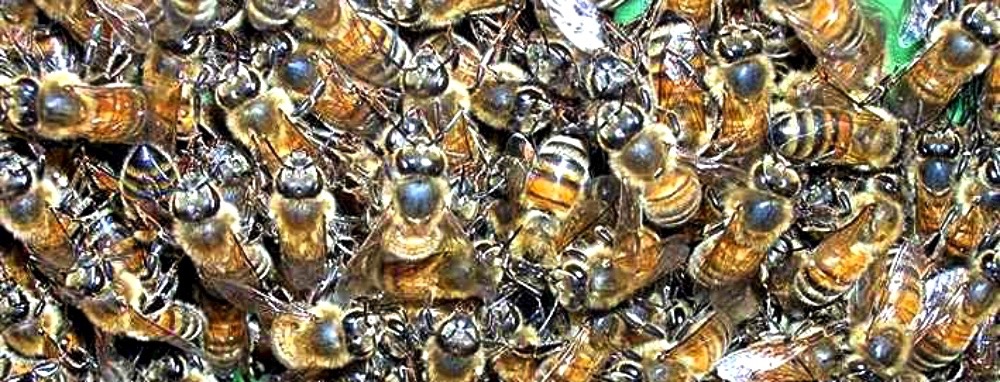
2004
Colony strenght was very good in April 2004. The strongest covering 1 and a half 10-frame boxes full depth Langstroth.
Of the 15 Carniolan colonies 9 died, 60%. Those left looked healthy on their 6-7 frames of bees.
During 2004 I couldn't see any sign in any of the Elgon colonies that they had mites. I did no drone comb cuttings or used any drugs to measure the amount of mites or treat against the mites. I have though looked carefully to see if I could observe any sign of a growing population of mites or of secondary infections from viruses, or if something negative development should take place. But the colonies behaved normally all season.
I wintered 97 colonies 2004, of which 17 were in the Carniolan apiary. I had bought some new Carniolan queens from Slovenia and also bred some queens from the best of the old queens. In some of the Carniolan colonies I judged the mite population to be a little too high and treated them with thymol in the autumn.
Why the Carniolan apiary looked so good I think was due to the use of 4.9 mm cell size foundation. Those colonies that had a little too big mite population were those that hadn't drawn that foundation so well the previous year.
In 2004 also in this Carniolan apiary the 4.9 foundation was drawn well, which I think is due to the use of a closer spacing of the frames, with 32 mm from midwall to midwall, instead of 35 or 38 mm. Bees apparently don't want only smaller cell size in the brood area, but also a closer spacing of brood combs.
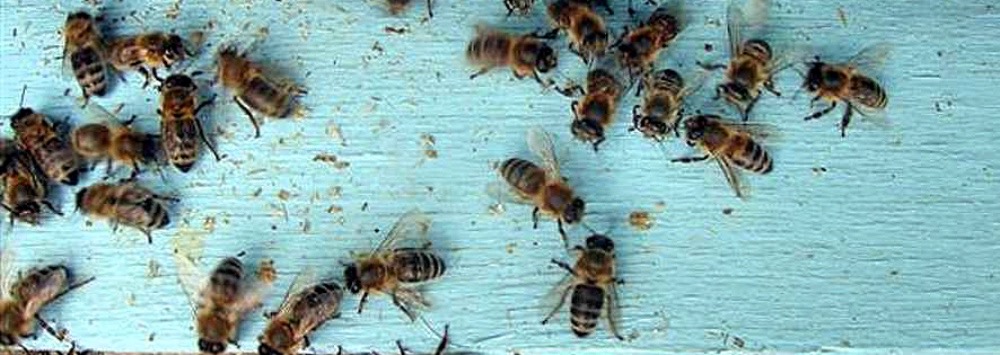
2005
In March 2005 no colonies had died and they were healthy and fine. The season of 2005 was good with a lot of honey. The bees developed normally and behaved as expected. No problem with mites or any other disease. No treatements were made except what I'm going to describe a little further down.
I watched for signs of unnormal development or behavior, but couldn't see any in any of the bee colonies.
My conviction is that treatments should be used as little as possible, with the norm being nothing. I think drugs of any kind have bad influence not only on the target bug but also on the bees. Alien chemicals can easily make them weaker in different respects. But most of all it's a waste of time and money, when there are other strategies available.
Selection of resistant bees is the first priority and management methods helping the bees stay healthy is another important tool in helping the bees. If you use a lot of drugs it's impossible to select resistant bees. In the beginning of a selection and management strategy you may probably loose some more bees then wanted. But such losses is clearly becoming something you can expect coming in intervals when drugs are used so I find that a worse longterm solution. 30 years with drugs further south in Europe than where I live tells me that.
Wintering the bees in the autumn of 2005 went almost as smooth as in the old days when the varroa mite wasn't present.
As I have a curious mind I have tested also some other types of bees than Elgons. But Elgons have contributed well in breeding resistance to the varroa mite. In Finland we can buy mated queens in May from the south of Europe. So I have tried some Slovenian Carniolans and Italians from Italy. Nucs that are made in May with such queens give a crop the same year they are made, even in our short season. I though must say I don't like these other bees as much as I do my own (that's always the case with us beekeepers isn't it?:-), so I'm going to quit using them.
The Italian Italians (not Italians bred in Finland I want to point out) are unfortunately very aggressive, at least those I have tried. The Carniolans I've tried are too uneven in different respects. But some of the Slovenian queens are very good. I even think that it would be possible to breed a good varroa resistant strain out of them if you have many enough to make selection from. I would say if you keep them on smaller cell size, at least on 5.1 mm, preferably on 4.9 mm. Some of these Slovenian Carniolans could draw small cell foundation well.
As I have a mold for wax foundation with 5.1 mm cell size, I havn't been so keen in going down to 4.9 mm. But most of my bee colonies have at least a couple of 4.9 cell sized combs in the middle of the broodnest when I winter them.
The abnormal large cell size that has been used for quite some years in Finland is 5.4-5.5 mm. You can even find foundation molds giving cell size 5.7 mm. But more and more of us beekeepers are realizing that history has played a trick with us, as the first commercial wax foundations made had 5 cells per inch (in America), which is just below 5.1 mm cell size.
The combs with 5.45 mm cellsize I still have I use above the queen excluder in the honey supers and not for brood.
I wintered 129 colonies in autumn 2005. Of those 6 were ded in spring 2006 due to starvation. My fault. No signs of any varroa or virus infections.
When I harvest the crop I make a note of those colonies that haven't developed as expected, if they are weaker than the others. I also check how clean they keep the bottom boards. I think I've seen a connection between varroa resistance and clean bottom boards. Maybe hygienic behavior affects mite resistance too.
Those hives that don't seem good enough I give a thymol pad. Pieces of 2.5 cm x 10 cm drenched with thymol solution can be bought here in Finland. Ten pieces in a plastic bag. The recommendation is one piece on the top bars during four weeks just after the main harvest. At my place that's in the beginning of August. I did this in my inferior hives and checked the downfall of mites after three days. Those that dropped 200-300 mites (which was on the higher side) were allowed to keep their pads for three weeks. Those that dropped 10-20 or so had the pads removed.
The colonies that were tested in this way with a thymol pad were all the Italians, 5 in number, all the Carniolans, 13 in number, and about 32 Elgons and Elgon crosses. Totally about 50 colonies were tested this way of my 129 colonies. Many Elgon apiaries hadn't got any treatment for quite some years by then and many Elgon colonies had never got any treatemnt of any kind.
30 of these 50 colonies were allowed to keep their thymol pad for three weeks due to the number of mites that dropped during the first three days. It was the 5 Italians and 10 of the 13 Carniolans. The other 15 were mainly Elgons crossed with Buckfast drones.
Actually I don't know if this treatment was needed for the colonies to survive. You see I can easily have missed other colonies which I didn't test, that might have had quite some mites. And there were no colonies with wintering problems.
But survivability is in a way not always due to the amount of mites. Colonies can sometimes have quite high amounts of mites and still survive well. It's said it's viruses killing the colonies, maybe in cooperation with nosema and pesticides. But at least I think I this way described picked the most probable colonies of being affected by mites and viruses. And I brought down the mite pressure, making it easier for neighboring colonies to deal with their own mite population without getting extra mites through reinvasion.
Elgons are on the mother side going back to Monticola in East African mountains or Sahariensis from a Marockoan oasis. I have though some colonies which have Buckfast on the mother side (Macedonian line) which have been crossed with Elgon drones three times. Colonies of that constitution I didn't give any thymol treatment either.
I should also mention that I havn't done any drone brood removal in many years to fight the mite. Instead I let the colonies keep some drone comb. They need drones, for the mating of the virgin queens for example.
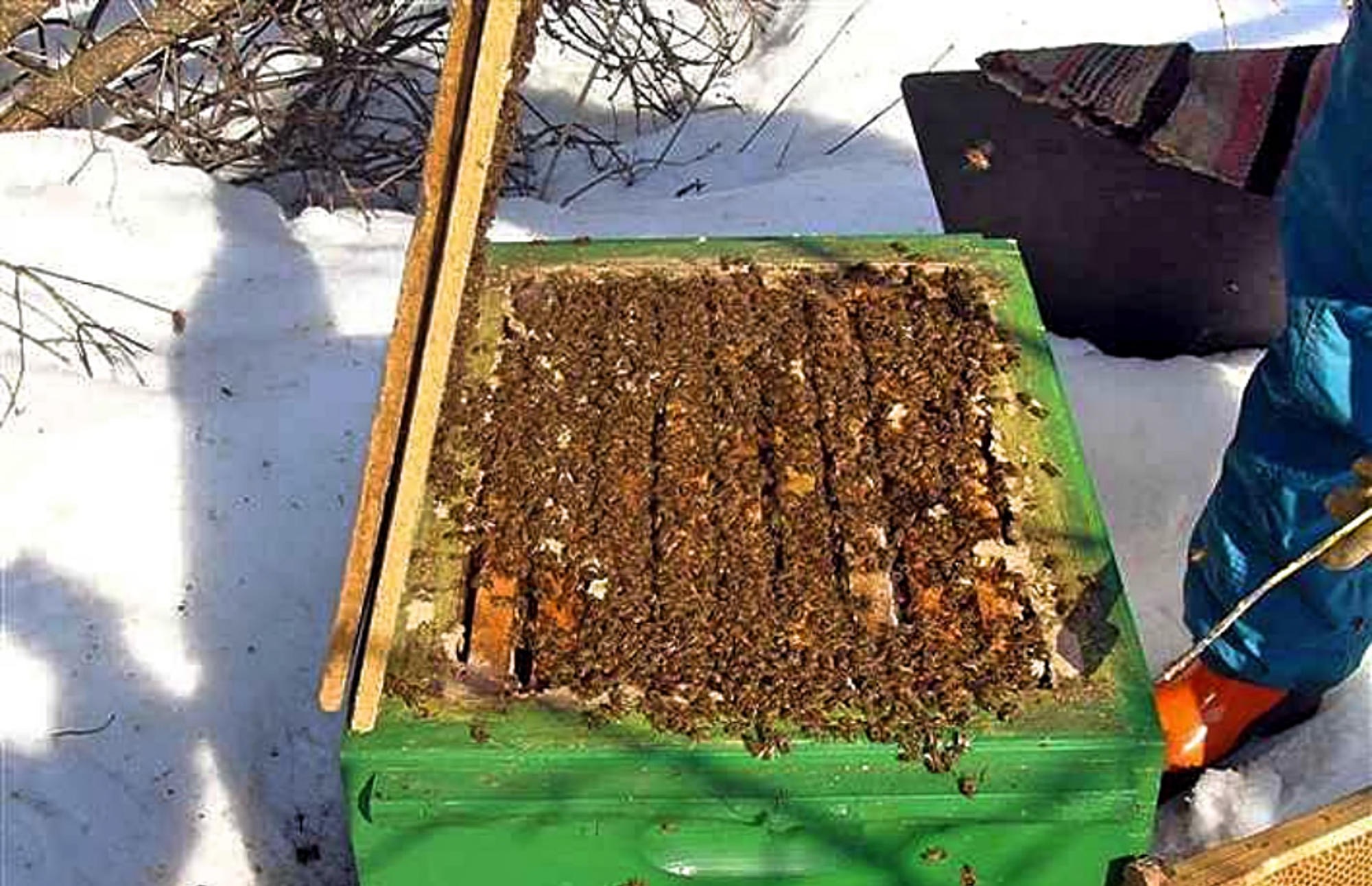
A strong Elgon colony in May 2006
Back to normal in 2006
The overwintering till spring 2006 went well. Development were normal in spring, in fact the colonies looked so healthy and strong they hadn't done in years. In 2006 beekeeping was back to normal as it was before the arrival of the mite, at least almost.
I study the bees at the entrance, often when I take a tour in the apiary at home. It's interesting. You can see different things happening. The spring in 2006 I saw some colonies where the guard bees at the entrance were very active checking every bee approaching. I would like to test again such colonies, put mites on bees close to the entrance. But I have problems finding mites now. Maybe I have to advertise for a frame of brood with a lot of mites.:-)
I appreciate that more beekeepers are trying Elgon bees in Finland. I just name a few that work with Elgon bees today. Pauli Nevala who won gold medal in javelin-throwing in the Olympic games in Japan 1964 is one. Pauli mentioned that his Elgon colonies smelled strongly like of cat pee one autumn. That smell I could sense myself several years ago when I also had Buckfast colonies with a lot of mites in my apiaries. Also others have mentioned they have smelled similar kind of smells from Elgon colonies, especially in autumns. Some of them even called the bee inspector to have the bees checked for American foulbrood, which it wasn't. Of course it's difficult to know if this smell have anything to do with the bees fighting the mite, but it seems anyway the bees might smell like this when they are fighting a mite population that is a little bigger than just small.
Another beekeeper that worked with Elgon was the bee scientist Seppo Korpela. He was counting mites a lot more than I did and was involved in trying to select a resistant strain. He was not using small cell size.
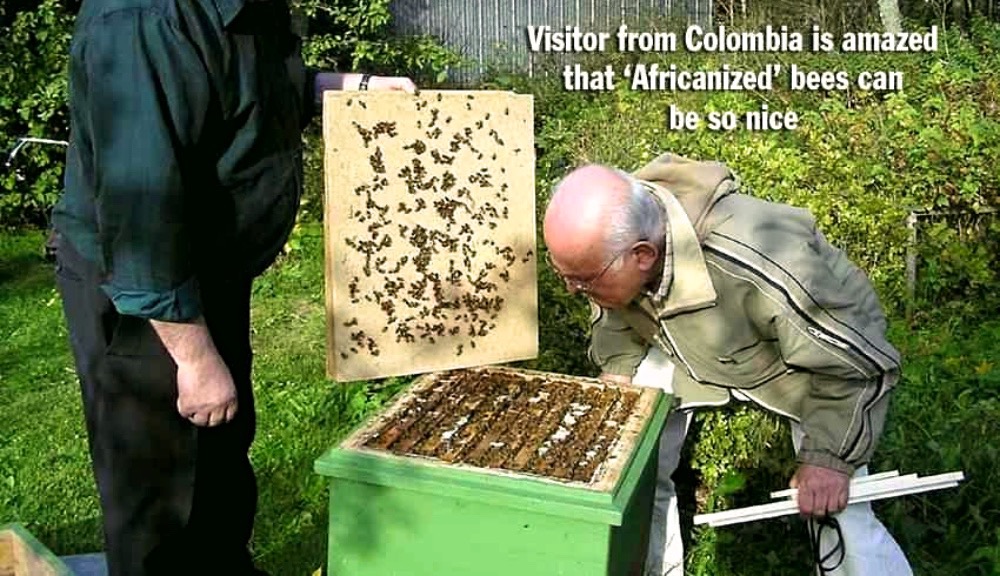
Many of my Elgon colonies can be tracked back to a colony I called 439. The motherline is Sahariensis, but it had a lot of Monticola heritage, at least theoretically.
I can mention too that my honey was tested 2005-06 for spores of American foulbrood and none were found. I don't see chalkbrood anymore. I don't know if I should thank the selection that's been taking place in my bee stock or small cell size. Maybe both. Nothing of this is at least harmful for the bees. Well, if you don't use too much inbreeding of course. I'm convinced inbreeding can do a lot of harm weakening the bees. Mating stations and insemination can be of advantage, but to keep the genetic variation big enough I think it's important that virgin queens can mate in an area with a big amount of colonies that are not closely related, but still of the same origin. As I have it here in Munsala where I live.
The years have passed by since 2006 and today more than ten years later beekeeping is continuing the same way as then, back to normal as before the mites arrived. I have had 200 colonies, but I'm getting older and am cutting down the number of hives somewhat.
Now it's 2021 and my son has is the beekeeper and owner of bees. He has seen the bees can do and help you make a living. Therefore he now continue with the bees when Marianne and I have retired.
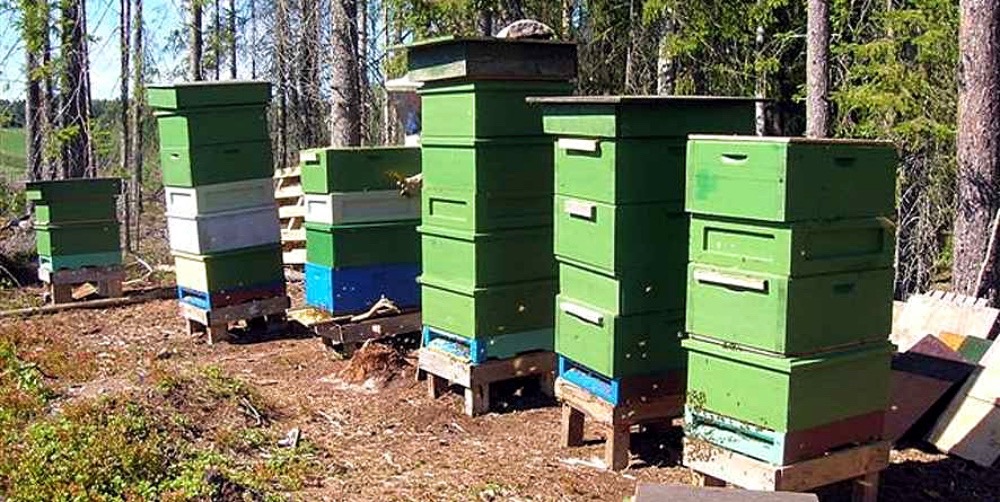
One of my apiaries in 2006
My website: